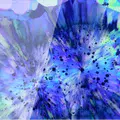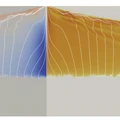
- 23 May 2024
Following a resolution that was made by EGU’s Council, the current EGU President has been dismissed.
European Geosciences Union
www.egu.eu
Following a resolution that was made by EGU’s Council, the current EGU President has been dismissed.

Thanks to the enthusiastic efforts of our members and volunteers, EGU24 broke all our previous record with an astounding 20,931 people participating in the General Assembly, both in Vienna and online!

This Earth Day EGU joins with geoscience organisations around the world to share our commitment to promoting the conscientious applications of science to help us find solutions to create a just and sustainable future for humanity and the planet.

An abstract submitted to EGU24 has been withdrawn from the programme.

The European Geosciences Union’s annual General Assembly will be held from 14-19 April 2024 in a hybrid format. Journalists, science bloggers and other media participants can now access the online press centre for press conferences and sessions of media interest.

Hello Dan. Thank you for agreeing to this interview! Before we dig deeper, could you tell our readers about yourself and your career background in soil science? Absolutely, Simon, thank you so much for inviting me to this interview. Well, one of my earliest memories is being in the garden, ripping up the grass to poke my fingers into the soil beneath. That curiosity has fuelled a life-long passion to understand our soils ever since. I studied Geography at Royal …

In this week’s blog Shi Joyce Sim from Georgia Institute of Technology shares the underlying science behind two-phase flow dynamics. A talk at the Lunar and Planetary Science Conference in March got me thinking. Basically, the presenter described how boundary layers grow over time, a phenomenon that cannot be captured using one dimensional models and necessitates modeling in higher dimensions. I was inspired by the talk to write this blog about a similar topic: when should we apply two-phase flow? …

Erika Palmerio, a leading early career scientist working on conditions in space driven by solar activity, shares her journey of networking and inspiration. Auroras and disturbances in Earth’s magnetic field or Earth’s environment used to be studied as separate phenomena until scientists learned that they are related to the continuous chain of solar activity. While the Sun’s impact can light up the sky through enchanting displays of northern lights, an outburst of a solar storm could also plunge the Earth …